How Is Quality Controlled During Cardboard Display Production?
Have you ever invested in a batch of cardboard displays1, only for them to arrive warped, with mismatched colors, or just impossible to assemble? These issues can damage your brand's reputation and lead to wasted marketing dollars. True quality control2 goes beyond a quick check at the end; it's a deep process built into every single step.
To control quality in cardboard display production, we focus on three core areas: smart structural design for easy assembly, advanced color management for brand consistency, and rigorous packaging protocols to ensure safe delivery. This prevents common failures and guarantees a display that works for you.
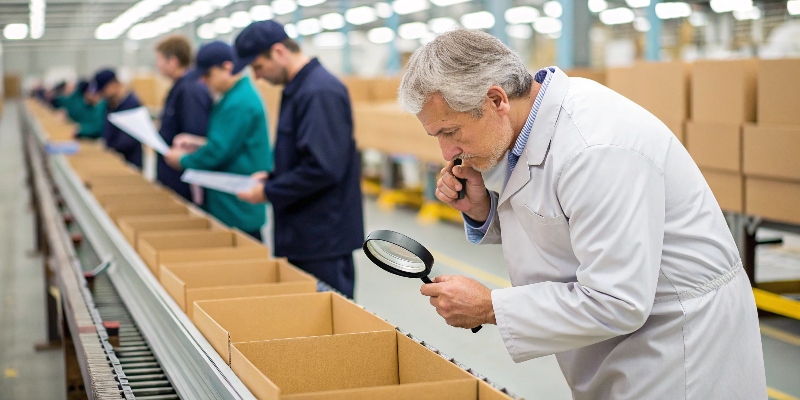
This might sound complex, but it's actually a straightforward system designed to give you peace of mind. Let’s dive into how we make this happen. You'll see how each part of our process is designed to protect your investment and make your product shine.
How do we control quality effectively during product production?
Assembling displays on the shop floor can be a nightmare. Complicated designs eat up valuable staff time and often result in wobbly, unprofessional-looking stands. This frustration is a hidden cost that many businesses overlook.
We solve this by engineering displays for simplicity and strength. Our innovative designs can often be assembled in just two seconds. This drastically cuts labor costs3 for our clients and ensures every display looks perfect and stands strong from the moment it's set up.
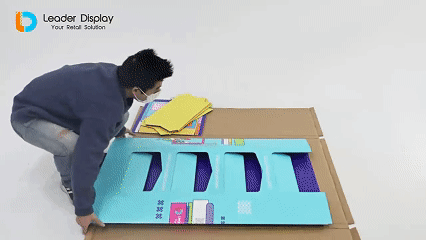
I remember a client, a snack food company, who was launching a new product in hundreds of stores. Their old displays took a merchandiser almost 15 minutes each to assemble. When you multiply that by hundreds of locations, the labor cost was staggering. They came to us looking for a better way. We developed a pop-up display for them that required just a single push to become fully three-dimensional and ready for stock. The feedback was incredible. Their team could set up an entire store's promotional area4 in the time it used to take for one display. This isn't just about convenience; it's about efficiency and cost savings.
Our Approach to Structural Design
We achieve this through a few key principles:
- Minimal Parts: We reduce the number of separate pieces. Fewer parts mean less confusion and faster assembly.
- Intuitive Folding: We design with pre-creased fold lines and simple, lock-in tabs. The display almost builds itself.
- Structural Integrity: We use physics to our advantage, creating shapes that distribute weight evenly without needing complex internal supports.
Here’s a simple breakdown of the difference this makes:
| Feature | Traditional Displays | Our Easy-Assembly Displays |
|---|---|---|
| Assembly Time | 5-15 minutes per unit | As little as 2 seconds |
| Tools Required | Often requires tape or glue | None, uses interlocking tabs |
| Labor Cost | High, requires training | Minimal, highly intuitive |
| Consistency | Varies by assembler | Uniform and perfect every time |
By focusing on the end-user's experience from the very beginning of the design process, we eliminate one of the biggest pain points in retail marketing.
What are the quality control2 measures for color in production?
Your brand's color is not just a color; it's your identity. When a display's color is off—even slightly—it can cheapen the product's look and dilute your brand message. Customers notice these inconsistencies, and it can affect their trust.
We use an advanced color management system5s://arxiv.org/pdf/1909.12583)6 system to guarantee a perfect match. By calibrating our equipment to your exact brand colors, like specific Pantone shades, we deliver a flawless and consistent visual experience that reinforces your brand identity7.
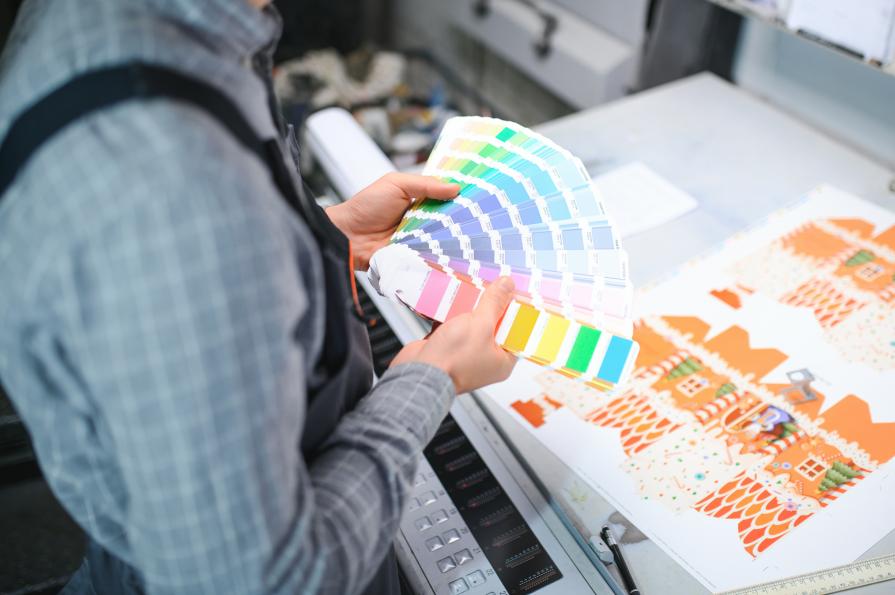
A few years ago, we worked with a high-end cosmetics company. Their signature color was a very specific shade of lilac. They told me that their previous supplier consistently delivered displays that were either too pink or too blue. It was a constant source of frustration. For their project, we took a sample of their product packaging and used our spectrophotometer to create a unique digital color profile. We ran multiple test prints on the exact cardboard stock for their order and sent them physical proofs to approve under their office lighting. They were amazed at the accuracy. When the final production run arrived, every single display was a perfect match. That level of detail is how we build trust.
Our Color Perfection Process
Achieving perfect color isn't luck; it's a science. Here's how we ensure it:
- Digital Calibration: Our printers are calibrated regularly to international color standards (like G7). This ensures that what we see on our calibrated screens is what will be printed.
- Precise Ink Mixing: We use computer-controlled systems to mix inks to precise Pantone formulas, removing any chance of human error.
- Consistent Substrate Testing: Different cardboard batches can absorb ink differently. We test each new batch to see how it affects color and adjust our profiles accordingly.
- Client-Approved Proofs: Before we print the full order, you see and approve a physical proof printed on the final material. You have the final say, ensuring there are no surprises.
This meticulous process means your brand's visual identity remains strong and consistent across all your marketing materials.
What are the quality control2 systems for packaging and shipping?
You can have the most beautiful, well-made display in the world, but it means nothing if it arrives damaged. A crushed corner or a water-stained surface can render a whole shipment useless, causing launch delays and costly replacements, especially for overseas orders.
Every order has a unique packaging strategy to ensure its safety. We use customized packaging, conduct pre-shipment waterproof tests, and design 3D protective inserts to guarantee your displays arrive in perfect condition, ready for the sales floor.
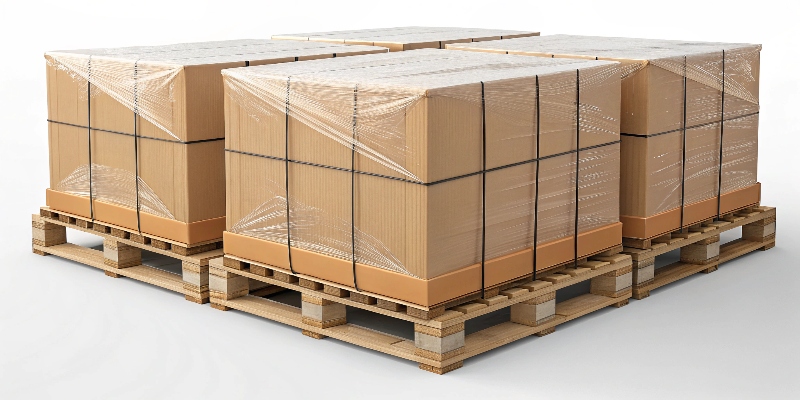
I learned the importance of shipping safety the hard way early in my career. We sent a large order of floor displays to a client overseas. We packed them flat in standard boxes to save on shipping costs. Unfortunately, the container experienced high humidity, and the boxes on the bottom were crushed by the weight on top. It was a disaster. Since then, we've treated packaging as part of the product itself. We now conduct tests like a "rain test," where we simulate heavy rain on our packaged pallets for 30 minutes to check our waterproofing. We also perfected our 3D protective guards, which are custom-cut cardboard pieces that brace the displays inside the box, preventing any movement. These steps add so much security.
Our Multi-Layered Protection Plan
We see shipping as the final, critical stage of quality control.
- Customized Packaging Methods: We decide whether to ship your order flat-packed or on pallets based on the display's design, weight, and destination.
| Shipping Method | Best For | Key Benefits |
|---|---|---|
| Palletized | Large, heavy, or pre-assembled displays | Maximum protection, easy to move with a forklift, less manual handling. |
| Flat-Packed | Smaller displays, orders where shipping volume is a concern | Cost-effective shipping, efficient storage at the destination. |
- Rigorous Testing: Before a new packaging design8 is used, it goes through a series of tests, including drop tests and vibration tests, to simulate the journey it will take.
- 3D Structural Protectors: We don't just use bubble wrap. We design and create custom cardboard inserts that fit snugly around the displays. These act like a helmet, absorbing impacts and preventing shifting during transit. This is especially vital for international shipping where the cargo is handled multiple times.
This focus on delivery ensures that the quality we build in our factory is the quality you receive.
How will you control the quality on the production floor?
Even with great designs and materials, small errors on the production line9 can add up to big problems. A misaligned print, a weak glue point, or a slightly off-kilter cut can compromise the entire display. Waiting until the end to check for quality is too late.
We control quality with a system of active, real-time checks at every key stage of production. From raw material intake to final packing, our supervisors and operators follow a strict checklist to catch and fix any issues immediately, ensuring every unit meets our high standards.
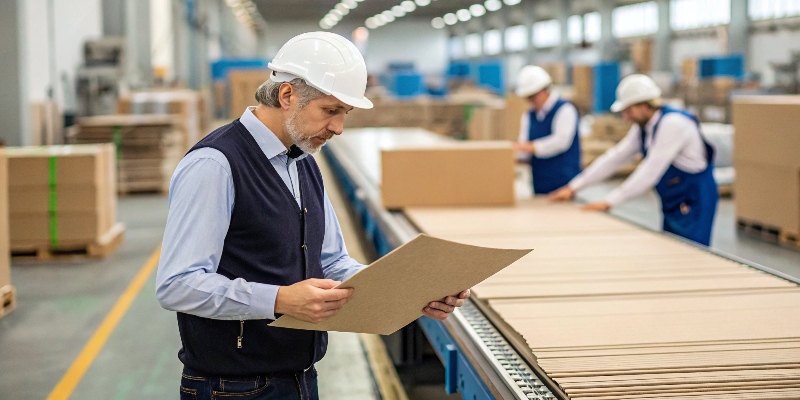
One time, a new batch of corrugated board was delivered to our factory. Our raw materials inspector used a moisture meter10—a standard tool in our intake process—and found the moisture content was too high. If we had used that board, the displays would have warped within weeks. Because we caught it right at the beginning, we were able to reject the batch and get a new one without disrupting the production schedule for our client’s very urgent order. This system of constant checks isn't about finding fault; it's about preventing problems before they can happen. It's this proactive mindset on the factory floor that truly protects the final product quality for our customers.
Our Key Inspection Checkpoints
Quality is a team effort, and it happens continuously.
- Raw Material Check: We inspect all incoming cardboard for correct thickness, weight, and moisture content.
- Printing Inspection: During the print run, our operators pull sheets every few minutes to check for color consistency, print clarity, and any blemishes.
- Die-Cutting Verification: We measure the first few units off the die-cutter to ensure all cuts and creases are perfectly accurate. Inaccurate cutting is the main cause of assembly problems.
- Assembly & Gluing Check: For any pre-glued sections, we perform peel tests11 to ensure the glue bond is strong and will hold up in the field.
- Final Packing Audit: Before an order is sealed, a supervisor does a final random audit, checking quantities and ensuring the packaging protocol is followed correctly.
This constant vigilance on the floor means we identify and solve issues instantly, maintaining a defect rate12 of almost zero and ensuring that the product we ship is something we are proud to put our name on.
Conclusion
We control quality by focusing on smart assembly design, perfect color matching, and secure shipping protocols. This comprehensive system ensures every cardboard display we create is strong, visually stunning, and effective.
-
Explore this resource to understand the latest techniques in cardboard display production and quality control. ↩
-
Learn about effective quality control measures that can enhance product reliability and customer satisfaction. ↩ ↩ ↩
-
Discover effective strategies for minimizing labor costs while maintaining quality. ↩
-
Explore strategies for creating impactful promotional areas that attract customers. ↩
-
Learn about the technology behind color management systems and their impact on branding. ↩
-
Find out how color management ensures brand consistency and enhances visual appeal. ↩
-
Learn about the elements that contribute to a strong brand identity. ↩
-
Explore the principles of packaging design that enhance product appeal and protection. ↩
-
Learn about common production line challenges and how to overcome them. ↩
-
Explore the role of moisture meters in ensuring material quality in production. ↩
-
Learn how peel tests ensure the strength of adhesive bonds in packaging. ↩
-
Understand how defect rates are calculated and their implications for quality control. ↩



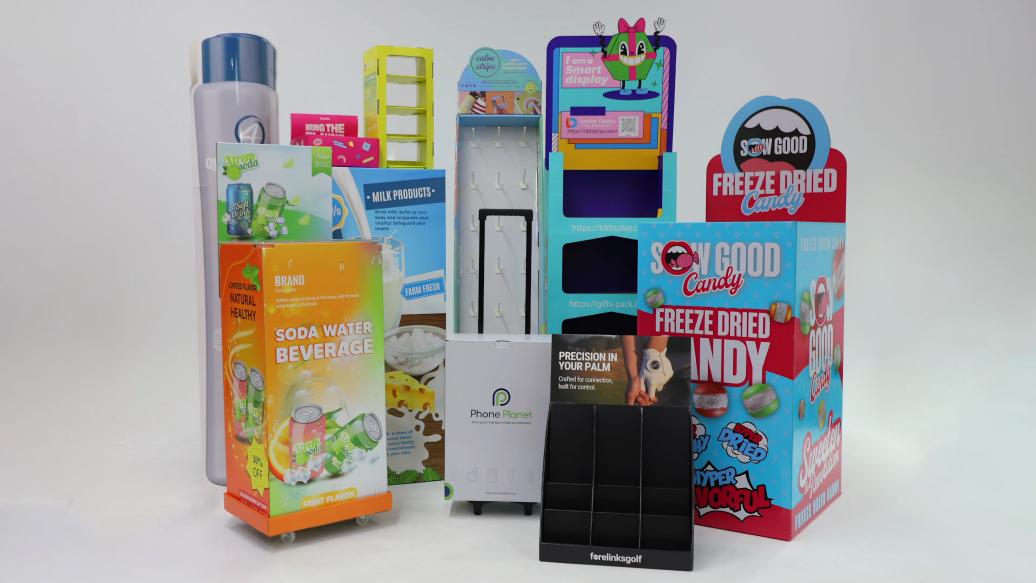


One Response